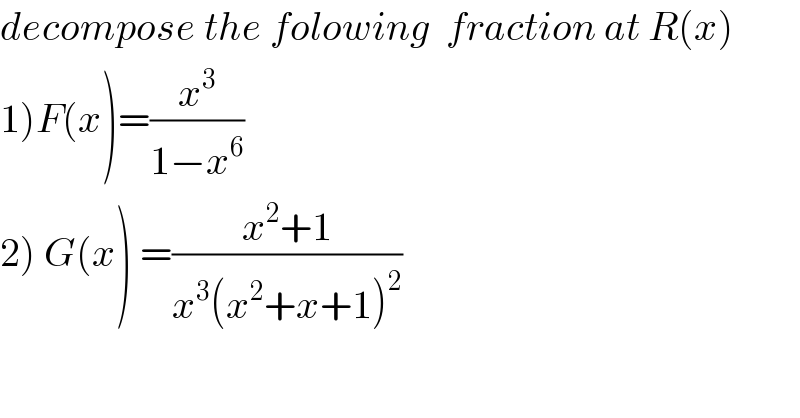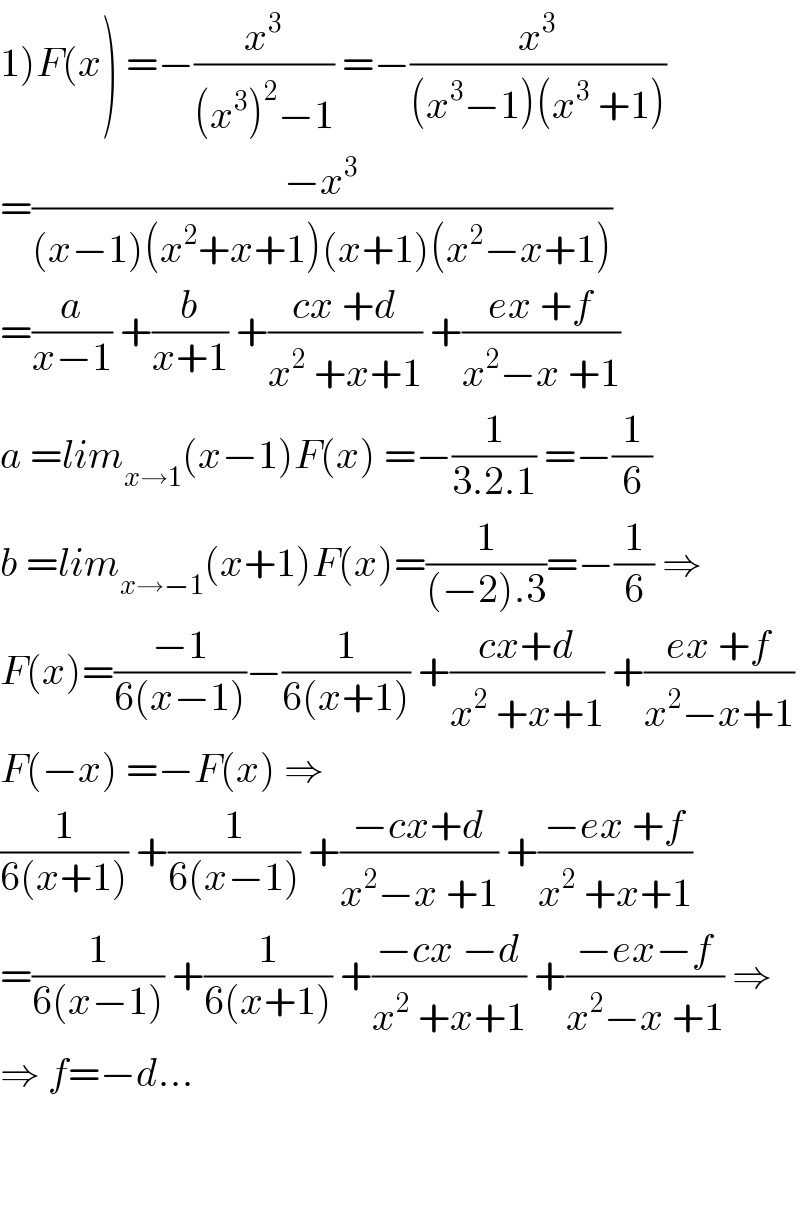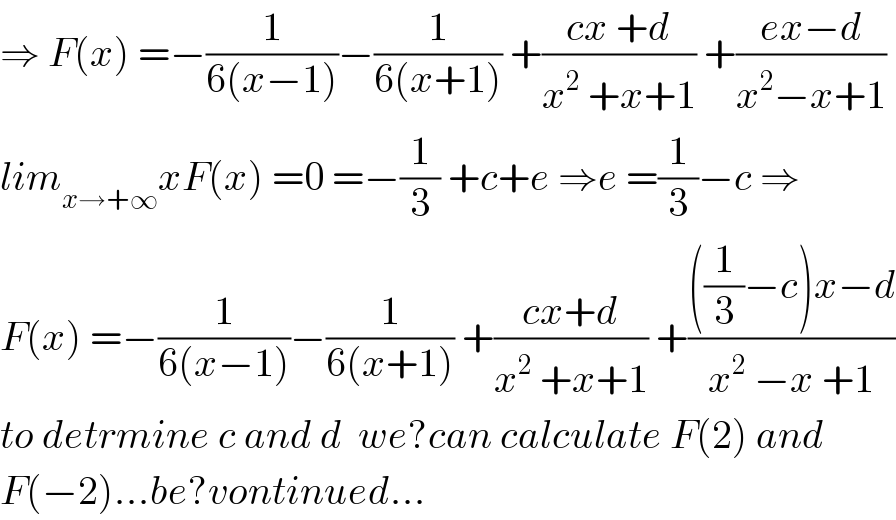
Question and Answers Forum
Previous in Relation and Functions Next in Relation and Functions
Question Number 67672 by Abdo msup. last updated on 30/Aug/19

Commented by Abdo msup. last updated on 30/Aug/19

Commented by Abdo msup. last updated on 30/Aug/19

